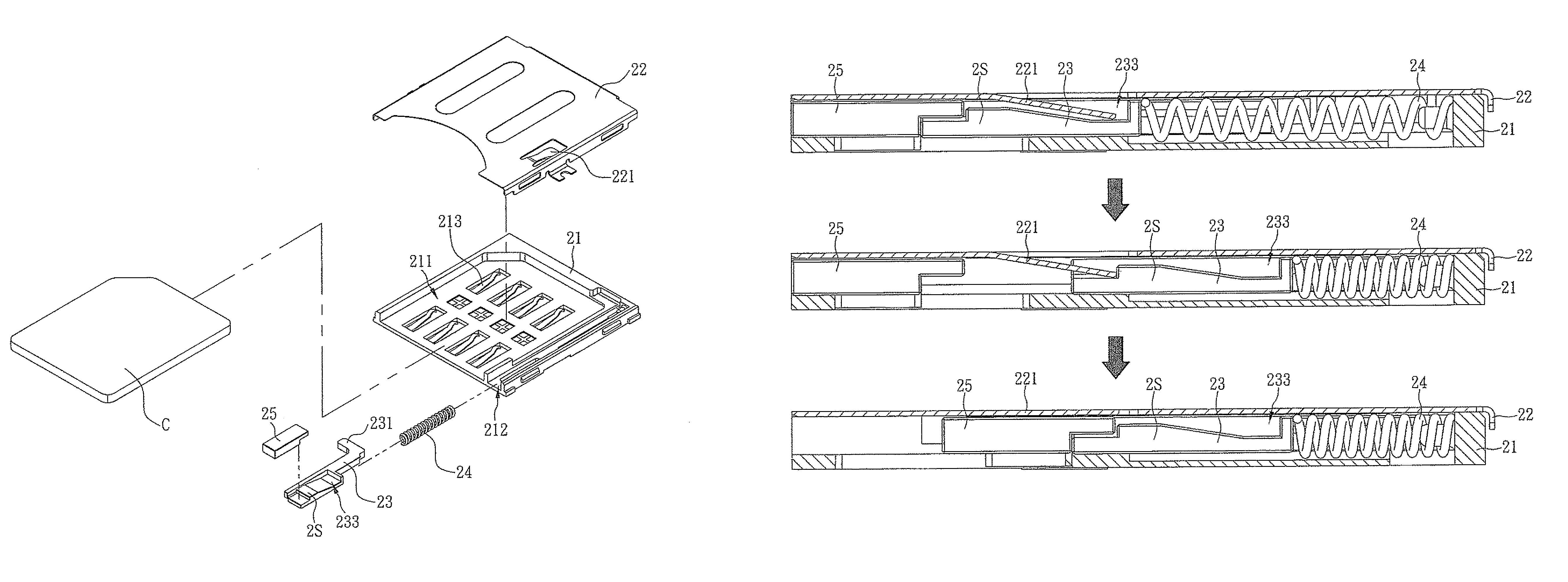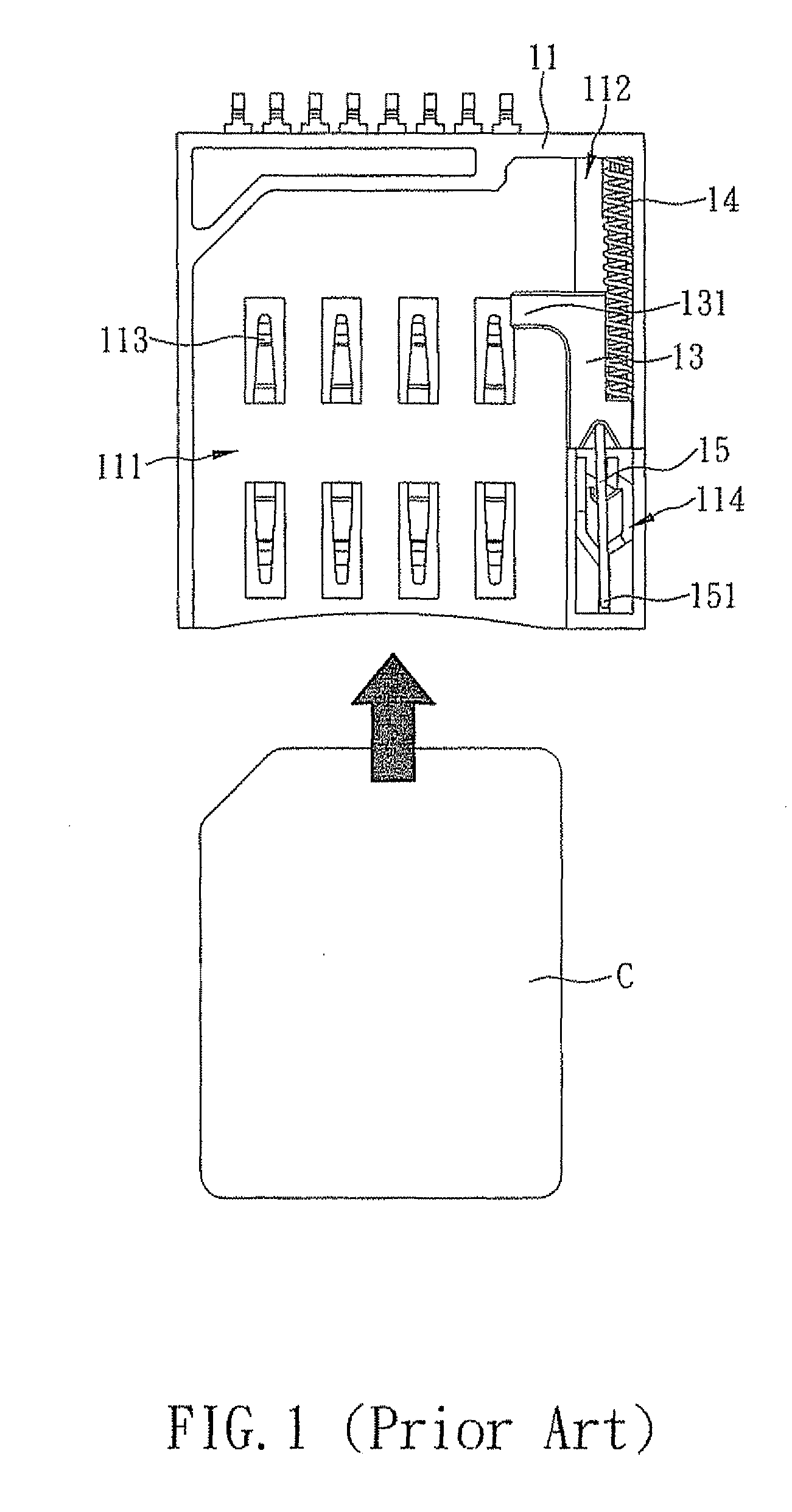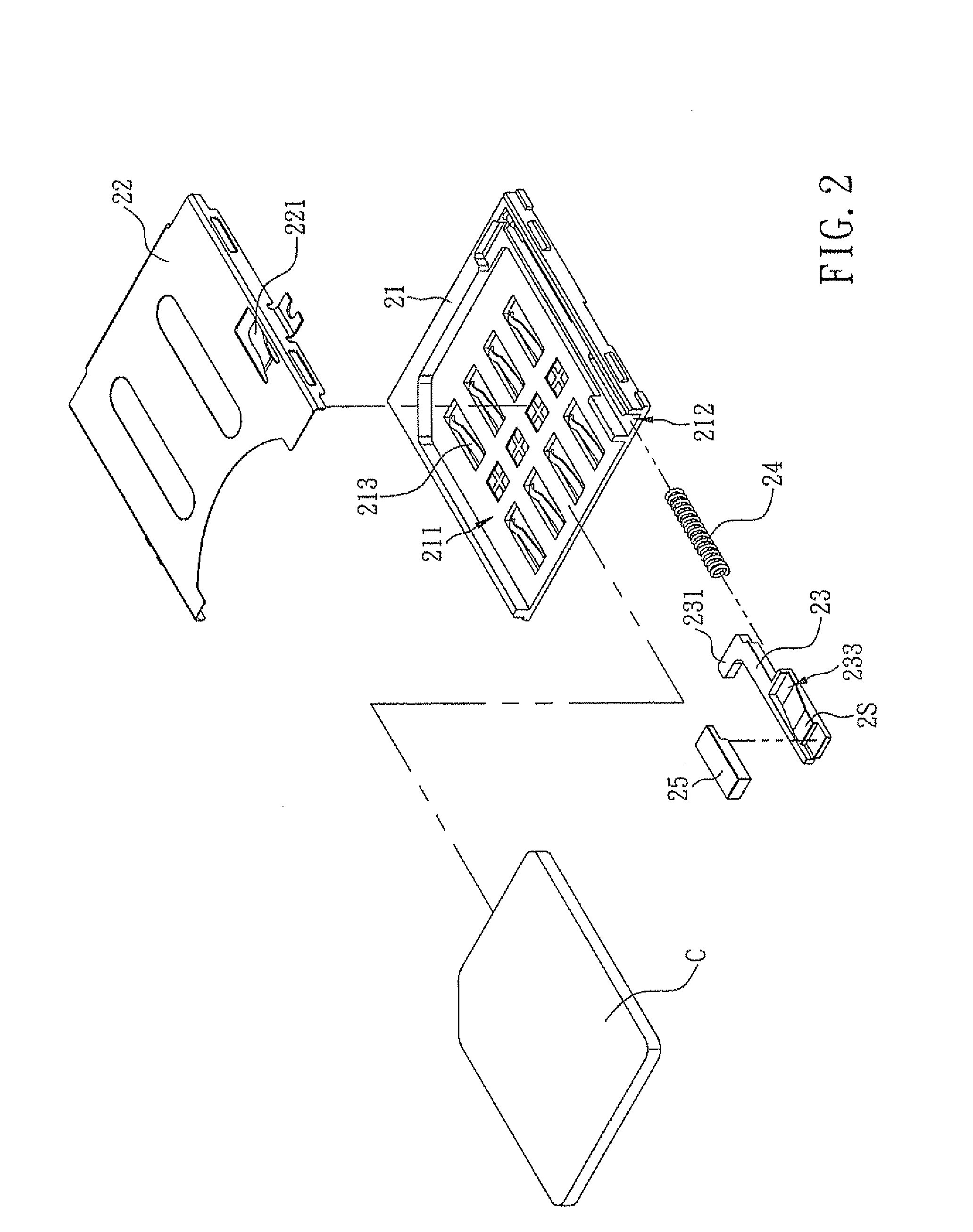Card insert/eject mechanism having a position-limiting plate engaging a sliding block
a position-limiting plate and card inserting technology, applied in the direction of coupling parts engagement/disengagement, coupling device connection, instruments, etc., can solve the problems of low structural strength of the card inserting/ejecting mechanism of the push-push connector described above, and the connection between the connector and the electronic card inserted therein is not secure enough, so as to minimize the chances of malfunction. , the effect of simple structur
- Summary
- Abstract
- Description
- Claims
- Application Information
AI Technical Summary
Benefits of technology
Problems solved by technology
Method used
Image
Examples
Embodiment Construction
[0026]The present invention discloses a card insert / eject mechanism of a card connector. More particularly, the card insert / eject mechanism is applicable to a card connector of an electronic device. Referring to FIG. 2, a mechanism according to the first preferred embodiment of the present invention includes an insulating seat 21, a metal housing 22, a sliding block 23, a resilient element 24, and a release bar 25. The insulating seat 21 is formed with a receiving space 211 and a track groove 212. A plurality of signal terminals 213 are distributed over an inner bottom surface of the insulating seat 21 that corresponds in position to the receiving space 211. The track groove 212 is adjacent to a lateral side of the receiving space 211. The metal housing 22 is connected to the insulating seat 21 to form a single piece and thereby cover the top of the receiving space 211 and the top of the track groove 212; consequently, the receiving space 211 and the track groove 212 form a card ins...
PUM
 Login to View More
Login to View More Abstract
Description
Claims
Application Information
 Login to View More
Login to View More - R&D
- Intellectual Property
- Life Sciences
- Materials
- Tech Scout
- Unparalleled Data Quality
- Higher Quality Content
- 60% Fewer Hallucinations
Browse by: Latest US Patents, China's latest patents, Technical Efficacy Thesaurus, Application Domain, Technology Topic, Popular Technical Reports.
© 2025 PatSnap. All rights reserved.Legal|Privacy policy|Modern Slavery Act Transparency Statement|Sitemap|About US| Contact US: help@patsnap.com



